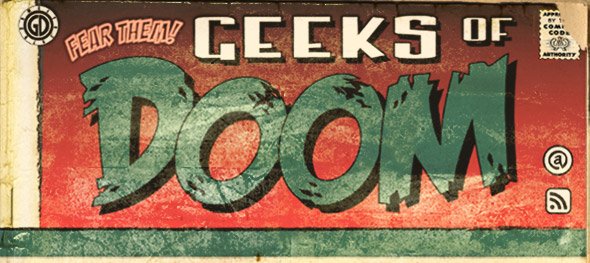
 The Godfather – The Coppola Restoration
The Godfather – The Coppola Restoration
Blu-ray edition
Directed by Francis Ford Coppola
Starring Marlon Brando, Al Pacino, James Caan, John Cazale, Diane Keaton, Talia Shire, Andy Garcia, Eli Wallach, Robert De Niro
Paramount Home Entertainment
Release Date: September 23, 2008
Everyone knows the Corleone family and its members on a first name basis. Everyone speaks the family’s language. Some people even try to make their homemade sauce like them and fail miserably in trying. If I were to say the words “˜toll booth,’ “˜cannoli,’ “˜Sicily’, and “˜horse’s head’ you would know what I was talking about. These characteristics are what make Francis Ford Coppola‘s The Godfather arguably the greatest film ever made.
When watching, whether for the first time or the 100th time, it is like we are entering the Corleone’s dinning room. Their setting is dark, but it’s still inviting, the feeling is intimidating but once we become familiar with it it turns into intimacy. It’s a film that is told entirely from the inside. The outside world of the Corleone family bears little consideration. From the film’s opening lines, “I believe in America,” The Godfather paints an exact replica of American capitalism but adds a few more colors that makes this capitalism seem OK in society. It’s a vivid view of a powerful Mafia family, which wakes up one morning to find their enterprise isn’t as powerful as it once was.
Vito Corleone (Marlon Brando), the Don of the family, is as friendly as an ice cream man but can turn menacing when the time is right. That form of anger wasn’t what Coppola was going for in the first film. He was drawn towards the route that depicted family and its values and morals more than any other film in the history of cinema. Under Vito the Corleone family had passion for all of what was good, loyalty shown to all who was worthy to it. He is haunted by a terror that would leave his three sons — Sonny (James Caan), Fredo (John Cazale), and Michael (Al Pacino) — the job of Don that he does so well. By the film’s end, all passion will be instilled in the wrong place and all of the family’s loyalty will be misguided by a new Don, a wolf in sheep’s clothing, who never wanted to inhabit the mafia world, but is now being slowly encompassed by it.
If the first Godfather contained personal secrets and dark atmospheres, then Godfather II only encourages and heightens both of them. The size of the film is enlarged and its meaning is more complex. It is a rare commodity that a sequel can draw the same amount of power perhaps even more than the original (won Best Picture and Director).
Business now is more elaborate and schemes are more diabolical as Michael (Al Pacino), who already obtains the American Dream, wants to fortify his standing as the most dominant of all mafia heads. His ideas of expansion (hotels in Nevada and Cuba) provoke ideas pure capitalism. There within lies the basics for greed, evilness, and corruption, all in which casts a huge shadow over repentance, forgiveness, acceptance, and loyalty. Try and express any of those feelings and you’re likely to get killed.
Those that are overshadowed in Part II were all in command when Vito Corleone presided over the Corleone Empire. Pacino’s Michael is out for himself, no doubt about it. Just ask his wife Kay (Diane Keaton) when he slams the down in her face. His killer instincts trigger at the drop of a hat. Director Coppola intervenes with Michael’s business plans with strikingly nuanced flashback scenes of wicked beauty charting Vito’s early childhood life (played by Robert DeNiro) that led him to manhood. Where the film obtains its undeniably dictatorship over the viewers is within the its haunting and sincere score by Nina Rota. Rarely has there been a film whose score has the innate ability to transcend the film itself. Rota’s score creates within the viewing audience a kind of sincerity towards its characters who are rotten to the core. If it weren’t for her music it’s safe to say the Godfather II would be just another crime saga that tries to heighten the level of corruption and violence high above the first film. Her potent and sticking musical chords evoke Michael’s instincts on wanting to do the family good, but doesn’t know how to go about and do it without creating insolence.
Usually the odd one left out, Godfather Part III contains scenes of cunning drama thanks to a graying Michael Corleone and his interest with the Vatican bank. Now years have passed over Michael, it’s now 1979 and wealthier than ever, the man who showed little humanity in Part II and only shows minor improvements in Part III. All the money in the world can’t buy the Corleone family their right to live comfortably. The main problem lies within the heart of Michael, a man who thought not to have one, as he’s constantly having his soul eaten for his past sins; most notably killing his brother Fredo. The film aims high on the food chain, it turned out well for the first two films, but fails because Coppola decided to hand his inexperienced daughter Sofia the role of Michael’s daughter. If people can look past that quibble they will be able to see a portrait of an old man who still has a mean bark, “Just when I thought I was out, they pull me back in.” That famous quote by Michael makes it clear that the mafia business is a bloodsucking enterprise that can’t be neglected. Only way would be if one should parish.
Blu-ray Features
Picture Quality Throughout the trilogy of Godfather films, each has a stark beauty attached to it. Gordon Willis, the renowned cinematographer known for his dark lighting, plagues the screen’s images in dark murky shadows. Previous DVD’s suffered from this. They aren’t able to produce the same crisp gold coloring that Willis originally intended with the films initial release. Now, Coppola has decided to restore all three Godfather films on Blu-Ray. Expectations were high. I’m here to say that he does a fabulous job of transferring each film (a special feature dedicated to this process). Not only does it enhance the gold coloring Willis was striving for in the first place but it’s able to convey the mood of three films that strive to create resonant meaning through its images. One perfect scene in Godfather I is Blu-Ray perfection. Opening up in the dark confinement of Vito’s office and cutting to his daughter’s wedding reception that is occurring right outside the office is a perfect act of contrasting. His office is dark and the blacks are vivid and sharp, while the wedding, bright, sunny and colorful is just as vivid and sharp. This collection of Coppola’s masterpiece is Blu-Ray gold. More importantly it reinstates the mood Coppola achieved upon each films initial release.
The Masterpiece that Almost Wasn’t — Priceless information. Plain and simple. Coppola, Steven Spielberg, George Lucas, and executives at Paramount all weigh in on the Hollywood of the 1970s; the Hollywood that was on the verge of collapsing. This feature is important to watch for anybody who loves The Godfather or cinema for that matter.
Godfather World — We know what the three films did to us when we first watched them, now get a load of what Alec Baldwin, William Friedkin, Joe Montanga, and, most interestingly, Guillermo del Toro thought of the film and how it still has an impact on their lives. Also the legacy and how it swept through the American culture is discussed.
Emulsional Rescue: Revealing The Godfather — The original negatives of the films, which were thought to be all but gone, are miraculously brought to life by a meticulous procedure by Coppola and his A list team. It’s a real rejuvenation.
The Family Tree — Each character found in the film is traced back, all the way, to Vito’s father. All major characters have an extensive amount of background information.
Montage of “The Godfather” a Red Carpet Special — …And when the shooting stopped. Here the post-production drama that was nothing less than a fiasco, involves Coppola and Paramount having two different views of the first Godfather film. Coppola’s team is interviewed and they share their stories on what really happened.
Four Short Films on “The Godfather” — This isn’t actually four short films, instead this feature contains outtakes of interviews and plot ideas that didn’t fit into the movie.
The Godfather Family — An extensive feature, clocking in at 72 minutes, that’s also found in the previous DVD package of The Godfather. A look inside Coppola’s world, very closed off to the public, as he and his team are tracked and interviewed on the making of each Godfather film. Most of the actors involved in the film, most notably Pacino, DeNiro, Duvall, and Garcia, are seen in little interviews that date back a decade or so.
Behind the Scenes — Location of the Godfather — a tour of New York City’s locations.
Francis Coppola’s Notebook — He talks about Mario Puzo’s novel and the creating of the script. He even claims that Hitchcock had an impact on the film’s final cut.
The Music of The Godfather — One of the most fascinating features. Nino Rota’s haunting score can be heard on the cassette that she originally pitched to Coppola and his father Carmine’s music (heard in GF III) is a touching feature that embarks on the relationship between father and son. Each musician’s music is set to a montage of photos from the movies.
Gordon Willis on Cinematography — a short four minute interview with the man that brought the film to life through his unique way of lighting the picture.
Puzo and Coppola on screenwriting — mostly discussing part III of the trilogy.
Audio Commentaries — Coppola, for nearly 9 hours, has to hold our attention. His words of wisdom on each film aren’t a must to watch, with exception of the first film. It’s a pleasure to listen to a director talk about not only his masterpiece but cinema’s masterpiece.
Storyboards
Additional Scenes — The most important is an alternate beginning to Godfather Part III.
Galleries
Timeline — A historical time line charting the trilogy of the films. It’s separated into certain time periods and has text that you can follow for the give; 1892-1930, 1931-1945, 1946-1955, 1956-1997.
****






Great overview of the greatest cinematic story ever told.
Comment by Jerry — October 27, 2008 @ 8:29 pm